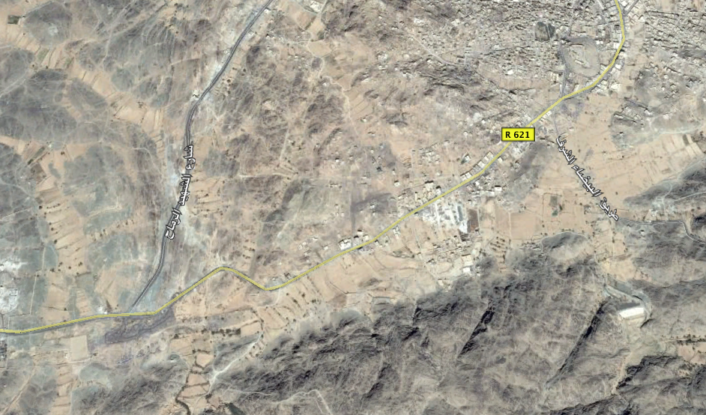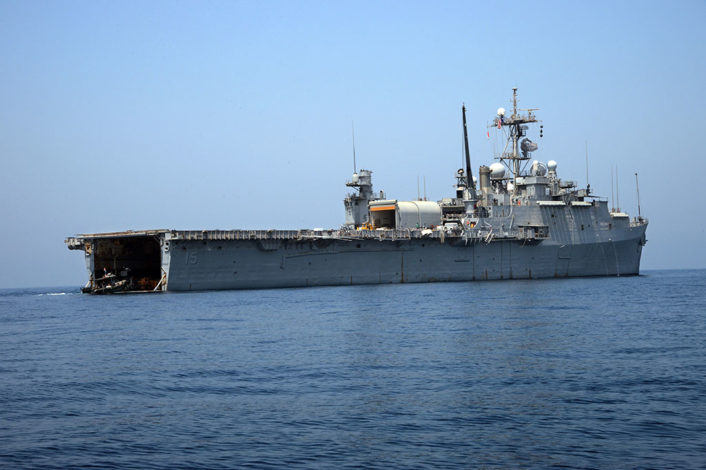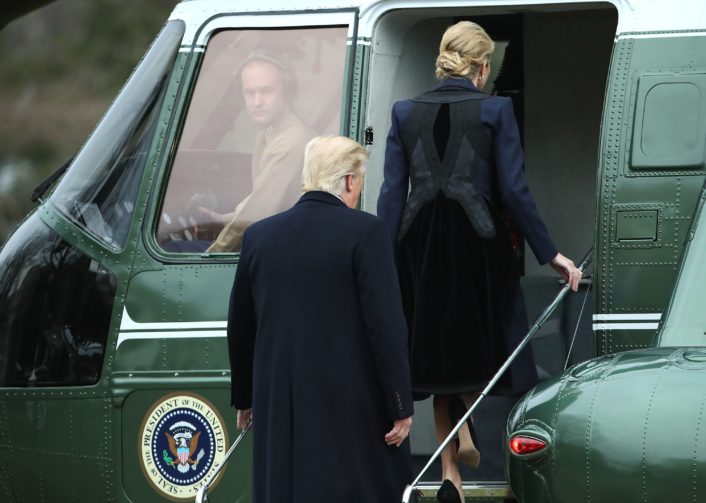Yemen Raid by U.S. Navy Task Force Blue Yields Intelligence on Terror Operations, U.S. President Trump Flies to Dover AFB for Arrival of Fallen SEAL Remains.
Additional information has emerged about the U.S. Special Operations Command raid on an Al Qaeda installation in the Yakla Region of Baida Province, Yemen that took place over the weekend.
While details of the raid remain classified ABC13 News Now reporter Elise Brown broke a story earlier today when she reported that a source told ABC News, “It was as though Al Qaeda knew the SEALs were coming, and were ready.”
U.S. Navy Chief Petty Officer William “Ryan” Owens, 36, from Illinois was reported as killed in action during the operation. Three other U.S. personnel were wounded during the raid and three more were reported injured during a hard landing in a U.S. Marine MV-22 Osprey tilt-rotor aircraft. That aircraft was intentionally destroyed by U.S forces on the ground following the crash to prevent its recovery by adversaries.
While it is likely the raid was conducted by a composite task force of U.S. special operations personnel, CPO Owens was a member of an East Coast U.S. Navy SEa, Air, Land (SEAL) team originating from Little Creek, Virginia. Media outlets have reported that Owens was a member of the specially trained Task Force Blue often referred to as “SEAL Team Six” in mass media.
The U.S. Navy’s Task Force Blue is comprised of “Squadrons” similar to other counter-terror special operations units. Red, Gold, Blue and Silver Squadrons are operational “raid” squadrons and are often assisted and/or accompanied by members of Black Squadron, an intelligence gathering and analysis asset. It is not known which squadron CPO Owens was attached to.
Official statements reflect that the primary objective of the raid was to seize physical intelligence assets such as electronic media, computer hard drives and documents that will provide a detailed insight into terrorist planning for future Al Qaeda operations. In an official release to the Reuters News Agency the U.S. Defense Department told reporters the raid provided, “Information that will likely provide insight into the planning of future terror plots.”
According to reporting by Mohammed El Sherif in Cairo for Reuters, “The local al Qaeda unit [in Yemen] organized the Charlie Hebdo magazine attack in Paris in 2015 and has repeatedly tried to down U.S. airliners.”
The raid resulted in a “one hour firefight” according to local reports on the ground. While reports of casualties have varied most media outlets suggest between 17-30 indigenous personnel, some reported to be Al Qaeda members, were killed on the ground during the raid.
The weekend raid by U.S special operations forces was planned “well in advance” based on intelligence gathered during previous months. Timing for the raid was specific as one source inside the U.S. military speaking on conditions of anonymity reported, “There were operational reasons why it happened when it did.” A contributing factor may have been the moon phase. The raid happened during a new moon, a period when lunar illumination at the target area is at its lowest providing maximum darkness.

Satellite images of the region show terrain that is hilly surrounding encampments and small cities at elevations usually below 1500 feet. This suggests high altitude vortex ring state was not a factor in the crash of the MV-22 Osprey during the raid.
Vortex Ring State was a potential factor in the crash of a U.S. Special Operations helicopter at the beginning of Operation Neptune Spear, the raid to capture Osama Bin Laden on May 2, 2011. Vortex ring state happens when rotary wing aircraft, such as the U.S. Marine MV-22 Ospreys used in this raid, settle into their own rotor wash and descend rapidly as a result of losing lift.
Weather in the region during the raid indicated low overnight temperatures of 70° Fahrenheit with visibility under the new moon phase of “8 miles” with moderate humidity and winds below 10 mph. These, along with the lighting conditions of the dark moon, were good conditions for the operation as reported.
Several media outlets have reported that the raid was launched from a U.S. Navy ship south of Yemen in the Gulf of Aden.
Additional air support was likely provided by U.S. Marine AH-1Z Viper gunships deployed from the same ship. Some local media reports on the ground said the gunships were “U.S. Apaches”. This is unlikely since the raid originated from a shipboard location according to reports.
The names of ships in the region are generally a matter of operational security but analysis through elimination suggests that if the raid originated from an assault ship, it could have been the USS Kearsarge, Bataan, Bon Homme Richard, Iwo Jima or Makin Island. Online sources account for the location of the assault ships USS Wasp, Essex and Boxer.
Another interesting seaborne asset recently reported in the U.S. Navy 5th Fleet area of operations is the unusually configured USS Ponce (AFSB(1)-15). The USS Ponce is an interesting possibility in this case since it has undergone modifications to support special operations, has a helicopter landing deck and other features for special operations. The USS Ponce is also used for operational testing of the shipboard Laser Weapon System (LaWS), a weapon used to repel small craft from attacking a larger vessel.

Also recently reported in the area as support assets are the guided-missile destroyers USS Nitze (DDG-94) and the USS Mason (DDG-87) along with the seaborne forward staging base USS Ponce. These vessels were reported operational on station off Yemen near the Bab el-Mandeb strait that connects the Red Sea to the Gulf of Aden in September. If they remain in this region they may have contributed to the operation.
U.S. special operations in Yemen have come into focus following an NBC News report on May 6, 2016 that quoted U.S. Navy Capt. Jeff Davis, a Pentagon spokesman, as saying that, “A small number of American military personnel are in Yemen providing limited support to the Yemeni government and Arab coalition battling al Qaeda in the Arabian Peninsula”. This contradicts a previous report that stated “American forces have not conducted any special operations in Yemen since December 2014.”
Finally, in late breaking news Wednesday, U.S. President Donald Trump made an unannounced visit to Dover AFB in Delaware for the return of the remains of U.S. Navy Chief Petty Officer William “Ryan” Owens killed in Sunday’s raid in Yemen. President Tump flew to Dover AFB on Marine One with his daughter Ivanka Trump and U.S. Senator Chris Coons of Delaware.

U.S. President Donald Trump and his daughter Ivanka Trump walk toward Marine One while departing from the White House, on Feb. 1, 2017, en route to Dover Air Force Base. (Credit: Mark Wilson/Getty Images)















